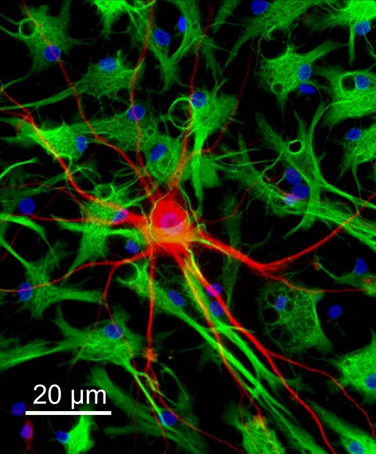New insights from electrical readouts in neuroscience
Experimental evidence of how the different neuronal compartments (soma, axons, dendrites) contribute to extracellular-electrical-signal landscape is provided in new study published in Advanced Biosystems.

Neurons communicate with one another and within neuronal networks via electrical signals. For the first time, detailed experimental evidence of how the different neuronal compartments (soma, axons, dendrites) contribute to the extracellular electrical signal landscape was provided in an article titled "The axon initial segment is the dominant contributor to the neuron's extracellular electrical potential landscape" in Advanced Biosystems 2018, 1800308 (DOI: 10.1002/adbi.201800308).
The largest‐amplitude signal within the extracellular‐potential landscape of electrically active neurons was found to originate from the axon initial segment (AIS), not from the soma. This finding in cultures of dissociated rat cortical neurons was confirmed with Purkinje cells in acute cerebellar slices of mice. Tracking of extracellular waveforms across different neuronal compartments confirmed electrical-activity initiation at the distal end of the AIS.
external page Advanced Biosystems is publishing research into technologies that enhance and harness biological systems, including systems and synthetic biology, advanced therapeutics, and biohybrids and neurotechnology.